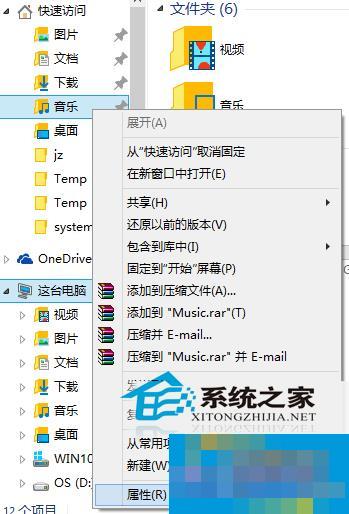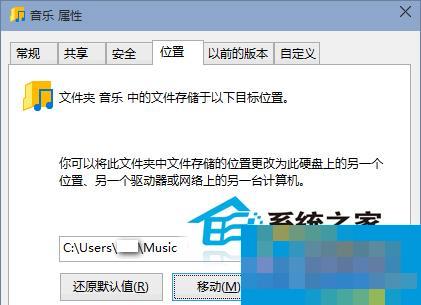What is the system disk? It is the hard disk where the Windows system is placed. The installed system is placed in the system disk, which already takes up a lot of space, but user files are also placed in the system disk. How to transfer user files to non-system disk in Win10?
Let’s take Win10 consumer preview Build 9926 as an example to share with you how to move Win10 user files to a non-system disk:
Method 1: Manual movement
Right-click on the user folder that needs to be moved, such as the "Music" folder, and select "Properties" in the pop-up right-click menu. As shown in the picture:

Finally, in the "Music Properties" window that opens, switch to the "Location" tab. As shown in the picture:

Click the "Move" button, select a new location on the non-system disk in the pop-up "Select a Target" window, and then click "Apply" or "OK". The "Do you want to move all files from the original location to the new location?" dialog box will pop up. As shown in the picture:

Selecting "Yes" will move the user music files in the current location to the new location you just selected on the non-system disk. This completes the transfer of the "Music" folder.
Follow the same method to move all user files to a non-system disk.
Method 2: Use the "Personal File Transfer Tool"
If you feel that the above manual moving method is too cumbersome, you can also use the "Personal File Transfer Tool" to automatically transfer user files to a non-system disk with one click.
User folders will increase as the number of user software installations increases, and installation on the system disk will cause the system disk to become increasingly bloated. In addition, once the system disk crashes, the user folders will also suffer, so moving to a non-system disk is a good way. In addition, the desktop paths are all on the C drive of the system disk. If the files are placed on the desktop, they are actually placed on the system disk. They can also be modified to change the desktop path to other disks.




